Category Single seaters Inaugural season 2008 Drivers 14 | Country International Folded 2011 Teams 14 | |
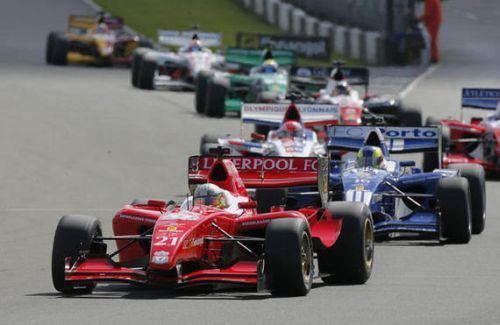 | ||
Superleague formula cars epic sound at monza circuit 4 2 litre v12 engine
Superleague Formula was an open wheel single seater motor racing formula, which started in 2008, at Donington Park in the United Kingdom. The league introduced team sponsorship by association football clubs. It used the slogan 'The Beautiful Race: Football at 300 km/h'. By 2011 the link with football was fading with more than half the teams no longer associated with football teams. It was founded by businessmen Alex Andreu and Robin Webb. On 19 May 2010, Andreu stepped down in his role as series president, with his successor named as Alfredo Brisac not many weeks later. The season ran between April and November at the same time as most other European race series. Every team used identical cars and 750-horsepower V-12 engines. The Sonangol Group was the series' title sponsor from June 2009 until the end of the 2010 season.
Contents
- Superleague formula cars epic sound at monza circuit 4 2 litre v12 engine
- 2008 superleague formula 01 donington park race 1
- History
- Race format
- 2008
- New in 2009
- New in 2010
- Qualifying
- Scoring system
- Entrants
- Circuits
- Broadcasting and media
- Expansion plans
- Technology
- Car details
- Engine details
- Regulations
- Performance
- Other ventures
- References
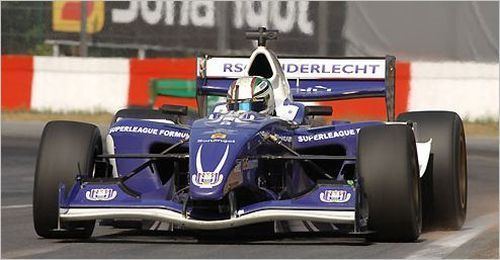
The future of the championship was in doubt after the cancellation of over three-quarters of 2011 season events. In April 2012, when most European motor racing started, there had been no news or information regarding the possibility of a 2012 or 2013 season running. The website updates ceased in 2011, and no further seasons were organised.
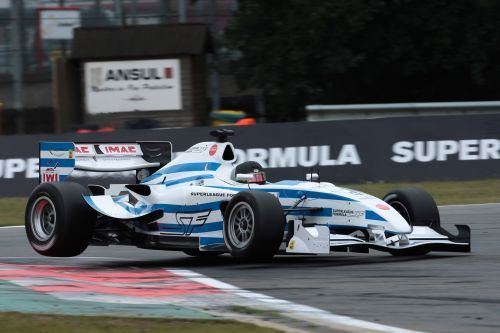
2008 superleague formula 01 donington park race 1
History
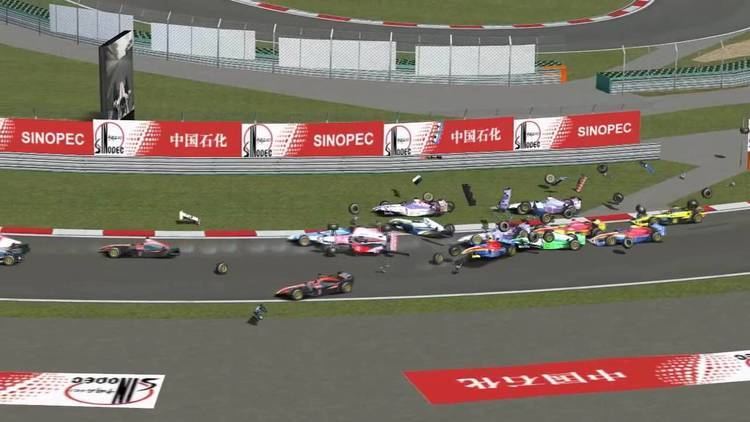
Continuing the concept of Premier 1 Grand Prix, the Superleague Formula was announced in 2005, receiving the full approval of the FIA in December 2005. The goal was to have a starting grid of twenty teams, each with one car. Much of the sales, marketing and technology work would be handled centrally by the league, thus affording a considerable cost-savings to the teams.
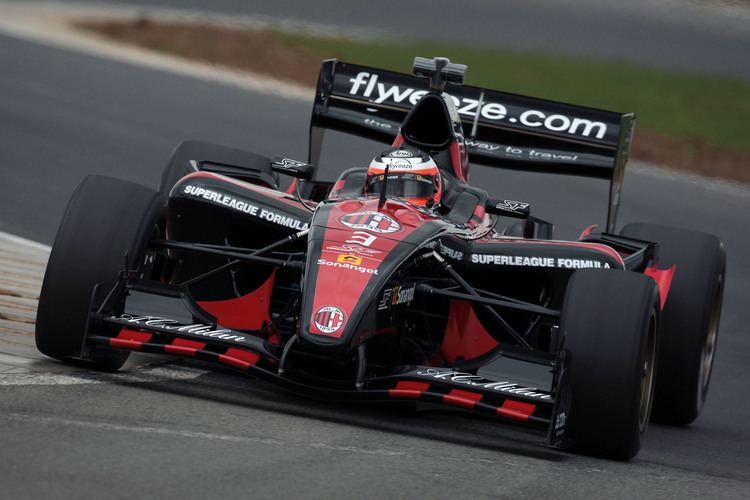
The inaugural season, in 2008, was won by Chinese club Beijing Guoan, driven by Italian FIA GT Championship racer, Davide Rigon. The season consisted of six double-headers, featuring 18 clubs, and also brought victories for Liverpool F.C., A.C. Milan, PSV Eindhoven, F.C. Porto, Sevilla FC, Al Ain and Borussia Dortmund. Superleague Formula's debut race was seen in 62 countries, and 100,000 people watched the twelve races, with 34,000 fans attending the last race in Jerez, broadcast live in 70 countries.
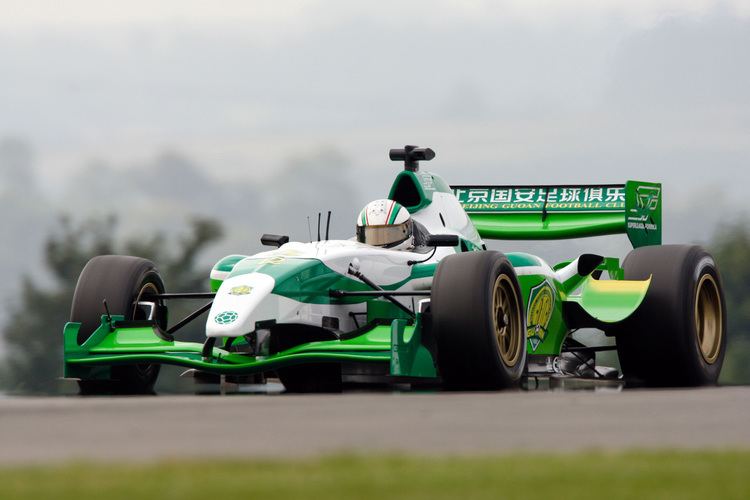
In 2009, the second season was won by English club Liverpool F.C., driven by Spanish racer Adrián Vallés. The season consisted of six double-headers, featuring 19 clubs, and brought first victories for Tottenham Hotspur, FC Basel 1893, Rangers F.C., Olympiacos CFP, Sporting CP, R.S.C. Anderlecht and Galatasaray S.K.. This was the first season to feature the Super Final format, adding a six car shootout to four of the six rounds. The races were broadcast in 62 countries to a reach of 100 million people.
2010 was the third season and saw the biggest change yet, with the calendar increased from six to twelve race weekends and another increase to both race event and end-of-season prize money. An average of 18 clubs competed at each event throughout the season. In a pre-season interview, Superleague Formula's Competition Director Robin Webb said,
After its biggest growth in 2010, 2011 saw a significant contraction with just six football clubs continuing their association into the series fourth season. The remaining cars carried national identities with many more closely associated with the competing drivers rather than any football connection. While an ambitious calendar was announced, several races were cancelled and relocated and as late as September organisers were still seeking to confirm some of its late season races, leaving doubt as to whether the series would have more than half the races of the 2010 season.
After the cancellation of the 2011 Chinese rounds, there were no news reports on the 2012 season. With many drivers and teams having joined other series, as well as no updates from the Superleague Formula website, the series was discontinued after just four seasons of racing.
Race format
Superleague Formula’s race format incorporated a Saturday qualification and races on Sunday, one with a reverse grid. For each round, the competing teams competed for prize money, plus points in a yearly championship.
2008
New in 2009
New in 2010
Qualifying
Superleague Formula employed a unique qualifying system based on a group stage to knock-out format used in some football tournaments:
Scoring system
The championship was decided by points, which were awarded according to the position in which a driver classifies at the end of each race, of which there were three per race weekend. The points were allocated as follows:
For the first two seasons the driver did not need to finish the race in order to collect points, but did have to start. However, in 2010 a driver needs to start and finish the race in order to score. The same points are awarded for Race 1 as Race 2, despite Race 2 having a reverse grid with the slowest given the advantage at the front. In 2009 began the running of a third race, a 'Super Final', at the end of certain weekends, however no points were awarded this race. As a result, the maximum number of points any football club/driver could score in one round during 2008 or 2009 was 100, by winning both main races. This feat wasn't achieved although Sébastien Bourdais, Craig Dolby, Robert Doornbos and Max Wissel all scored 90 points in a weekend by finishing either 2nd and 2nd or 1st and 3rd.
In 2010 however, with the Super Final also counting for points and 6 points going to the winner, the maximum points haul was now 106, achieved by winning all three races during the weekend. The record was 92 points, held by Craig Dolby from the 2010 Silverstone Superleague Formula round.
Entrants
Each Superleague Formula car represented a football club or national team.
Twenty-three football clubs and ten country-represented cars started at least one race in Superleague Formula, and all are listed in the table below:
Circuits
A typical circuit usually features a stretch of straight road on which the starting grid is situated. The pit lane, where the drivers stop for fuel and tyres during the race, and where the teams work on the cars before the race, is normally located next to the starting grid. The layout of the rest of the circuit varies widely, although in most cases the circuit runs in a clockwise direction.
All of the circuits currently in use are specially constructed for competition. All of the rounds are held in Europe, but discussions are taking place to have rounds outside of Europe. In total, 15 different circuits from 8 countries have hosted a race weekend. The first to do so was Donington Park, where the first races, at its 2008 round, were held. Only Circuit Zolder has hosted races in every season until now.
In July 2010, it was announced that the series would race for the first time outside of Europe by having two events in two successive weekends in China on 3 & 10 October that same year. Robin Webb described the venture as "a significant moment in the championship’s history".
Broadcasting and media
Fans globally were able to view the championship on national TV channels or via live streaming from the Superleague Formula website. Video highlights of every race from every weekend were also available for streaming from their website.
Expansion plans
In June 2009, Robin Webb stated he wanted the formula to eventually increase to 26 cars and a more diverse range of circuits. He expected the formula to attract more big global clubs and was keen to promote the idea that "Superleague Formula combines the passion of football with the thrill of auto racing".
Technology
The cars were built by Panoz Auto Development under the Élan Motorsport Technologies banner and officially named the Panoz DP09. They are powered by 750 bhp, 4.2 litre, V12 engines designed by US-owned Menard Competition Technologies. Élan previously manufactured the Panoz DP01 for the Champ Car series, as well as cars for other championships.
The chassis was built with a two-metre wide track, using under-body aerodynamics to create the needed conditions for increased overtaking opportunities. The cars were subjected to the lengthy FIA safety tests during development stages in 2007.
Car details
Engine details
Regulations
Performance
At Magny-Cours in 2009, the best qualifying time for a Superleague Formula car was 1:26.391, almost 11.5 seconds slower than the fastest qualifying time for an F1 car in 2008 of 1:15.024. Both Superleague Formula and Formula One raced at Monza in 2009 where similar dry qualifying conditions meant a better time comparison was possible. The fastest F1 time at the 2009 Italian Grand Prix was a 1:22.955, whereas at the 2009 Monza Superleague Formula round, a month later, the fastest SF time was 1:36.444, 13.5 seconds slower. This makes the speed of Superleague Formula car comparable to the World Series by Renault cars.
On 14 January 2010, Menard Competition Technologies received a Motorsport Industry Association’s award for Technology and Innovation for its "outstanding design and engineering work undertaken on the Superleague V12 racing engine".
Other ventures
A video game for Superleague Formula was made by Media Game and Image Space Incorporated and released for PC on 31 October 2009, although it was originally announced to be released in September. The game, released for download by the series' official website, featured 18 clubs and 6 circuits from in the 2009 season. During the 2009 Donington round some star drivers tested out the new game and gave it positive feedback.
